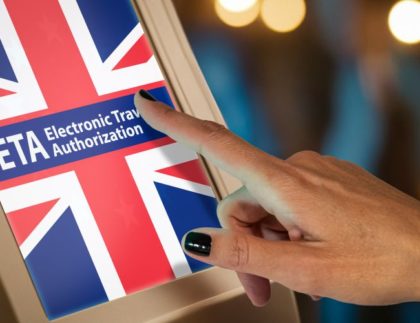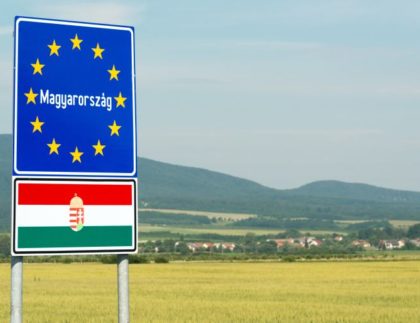

Transport operators certainly know very well that obtaining the right permits may be complicated, as it requires numerous strict requirements to be met. In order to support our readers, he have already discussed the permits required for professional drivers and carriers several times in this blog.
Today we revisit the topic in the context of an ECMT permit. How to obtain one? Which countries are covered by the document? Answers to these and other questions can be found in the following article!
What is an ECMT permit and who is it addressed to?
The ECMT permit results from the Brussels Protocol signed on 17 October 1953 by the ministers of transport of 16 European countries. An international organization was established – the European Conference of Ministers of Transport, which currently operates under the name International Transport Forum.
ECMT (French: CEMT, Conférence Européenne des Ministres des Transports), is a document allowing for international road freight between the signatory countries.
An ECMT permit is thus dedicated for companies who want to accept transport jobs in the area of signatory countries.
Definition and purpose of ECMT
ECMT is one of the agreements meant to standardize legislation at the national level. For practical purposes, ECMT may be interpreted as a document allowing carriers to perform cross-border freight. This should be treated as clearly distinct from national transport (within the territory of an ECMT member state) or transport between a CEMT member state and a country which did not sign this convention – an ECMT certificate does not allow those two types of freight.
With an ECMT permit, entrepreneurs may legally and freely transport goods between countries who signed the convention, which translates into development and competitiveness of their operations in the international market.
List of ECMT member states
ECMT covers the following countries:
Albania, Armenia, Austria, Azerbaijan, Belarus, Belgium, Bosnia and Herzegovina, Bulgaria, Croatia, Czech Republic, Montenegro, Denmark, Estonia, Finland, France, Georgia, Greece, Spain, Ireland, Liechtenstein, Lithuania, Luxembourg, Latvia, Malta, Moldova, North Macedonia, Germany, The Netherlands, Norway, Poland, Portugal, Romania, Russia, Serbia, Slovakia, Slovenia, Sweden, Switzerland, Turkey, Ukraine, Hungary, Italy, United Kingdom.
ECMT permits – what should you know?
According to the current regulations, in order to use the ECMT permits quota, a transport company must meet the following conditions:
- be based in one of the ECMT member states and use vehicles registered in one of these countries;
- carry freight between member states or transit through at least one member state;
- the country where the freight is loaded and unloaded must be an ECMT member state;
- the company name that appears on the permit must correspond to the name of the carrier who carries freight;
- keep permits in the vehicle throughout the duration of freight operations – for example: when freight operations are started during the validity period of one permit (annual or short-term) and then continue based on another permit (also ECMT) – both permits must be stored in the vehicle during the freight operations;
- properly store selected documents; ECMT permits, vehicle book and the accompanying vehicle certificates must not be laminated or otherwise covered with any protective layer.
The manner of using ECMT permits may be subject to review. The first review takes place already after the first quarter. If the permit is abused, it may be cancelled and granted to another carrier. Permits that have been cancelled or have been returned by the carrier may be re-issued to new entrepreneurs for the remaining period of their validity. In such a case, the original documents are to be cancelled and replaced with permits with separate, substitute numbers.
International transport and ECMT permits
A holder of an ECMT permit may, upon meeting certain conditions, execute an unlimited number of transit road freights between countries who signed the convention. Remember – ECMT is assigned to a company, and not to a specific vehicle. Thus the enterprise owner may decide, which international freight completed using their vehicles will be carried based on the permit held.
Entry into the territory of a non-EU or non-EFTA country often involves an inspection of the permit. When we use a multilateral permit, the inspection carried out by foreign agencies may involve detailed analysis of entries in the book, ECMT logbook and comparing digital data recorded in the tachograph and/or on the driver’s card.
ECMT in practice – how to use the permit?
Properly using an ECMT permit may turn out to be problematic. Helpful and relevant assistance is provided by the Guide for Government Official and Carriers on the use of the ECMT Multilateral Quota, which is the only document describing principles governing multilateral permit usage. Information contained in this document constitutes the only source of information – both for the permit holder and for the inspection agency employees.
A carrier who executes international road freight based on an ECMT permit is required to carry the document on the vehicle throughout the transport. One permit may be used simultaneously by just one vehicle on the route between the loading and unloading site – thus the relevant entry in the ECMT permit logbook must correspond to the date in the transport document.
Inspection agencies most frequently verify the correctness of ECMT permit usage, checking and comparing the entries in the logbook with CMR documents and additionally analyzing digital data from the recording device. Importantly, if the permit is transferred from one vehicle to another, then if vehicle X was unloaded today at location A, then vehicle Y could not have collected its cargo yesterday at location B, according to the provisions of the Guide.
Examples of using an ECMT permit in transport
Importantly, for the United Kingdom there is a provision allowing for transport between the UK and third countries by UE carriers based solely on ECMT permits. The aforementioned requirement also pertains to transports from the UK to Switzerland, Norway, Iceland and Liechtenstein and in the opposite direction. Consequently, one may even say that we got used to this type of transport operations to require only a community license.
Another example of transport operations that may use an ECMT permit is any transport where the loading and unloading take place in the territory of a signatory country, e.g.
- Germany – United Kingdom;
- Sweden – Moldova;
- Italy – Spain;
- Poland – France.










